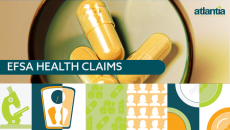Gel innovation promises weight management pill
Using cellulose as a base for their so-called hydrogel, scientists from the Department of Engineering for Innovation at the University of Salento and the Second University of Naples report that the extent to which the gels swell in the stomach could also be tuned by simply changing the amount of cellulose used.
Hydrogels are liquid or semisolid materials composed of long-chain molecules cross-linked to one another to create many small empty spaces that can absorb water or other liquids like a sponge. Previously, some researchers have considered hydrogels for encapsulation and controlled release of bioactive compounds.
The new research, led by Alessandro Sannino, looks at the ability of the gels to swell under certain conditions.
“The basic idea is that a xerogel-based pill is administered orally before each meal, and that the xerogel powder swells, once in the stomach. In such a way, the space available for food intake is reduced, giving a feeling of fullness. The swollen hydrogel is then eliminated from the body by the fecal way,” wrote Sannino and his co-workers in the Journal of Applied Polymer Science.
“In this perspective, the hydrogel is envisaged to pass through the gastrointestinal tract, thus it is supposed to encounter the different pH environments of the stomach and the intestine,” they added.
The research taps into the burgeoning weight loss and management market, estimated to already be worth $7bn (€5.2bn) globally. It also has implications for diabetes.
With 50 per cent of Europeans and 62 per cent of Americans classed as overweight, the food industry is waking up to the potential of products for weight loss and management.
Study details
The Italian researchers synthesised cellulose-based hydrogels using both pharmaceutical and food grade cellulose derivatives. The resulting hydrogels were tested in water solutions that mimicked the conditions observed in the stomach and the intestine.
Tests showed that the hydrogels did indeed swell in the water solutions, and were sensitive to changes in pH.
“Moreover, the hydrogel swelling capability was easily tunable, being it particularly affected by the cellulose concentration, the amount of crosslinking agent used, and the desiccation method,” wrote the researchers.
“In vitro biocompatibility assays provided evidence for the nontoxicity of such hydrogels, thus supporting their possible use as stomach fillers in vivo,” they added.
Gels for fullness
The innovation is along similar lines to an approach by researchers from the School of Chemical Engineering at the University of Birmingham, UK who developed an aqueous solution based on gellan gum that forms a solid gel in the stomach, curbing appetite.
The UK-based researchers are looking to use the new solution in a breakfast drink or a type of porridge.
The principle in this instance is that, on consumption, the low acyl gellan forms a gel in the stomach’s acidic environment. The strength of this gel is said to be carefully controlled so it is firm enough to provide a prolonged sense of fullness, thereby reducing the likelihood of snacking and eating unhealthy foods.
The Birmingham scientists have also reportedly designed the gel structure to progressively weaken, and eventually break down and pass through the digestive tract. This is important as it will allow for the desire to eat to return in time for the normal consumption of lunch or dinner.
“Our project is, to our knowledge, the only study that actually approaches this idea from a chemical engineering prospective,” said Dr Fotis Spyropoulos in an email communication with NutraIngredients in November 2009. “By this I mean that we are actually looking at the stomach as an additional ‘process’ that the food is subjected to. So we are looking at how to ‘use’ this process to provide the desired benefit; satiety in this case. “
Source: Journal of Applied Polymer Science
Volume 115 Issue 3, Pages 1438-1444
"Development and characterization of cellulose-based hydrogels for use as dietary bulking agents"
Authors: Alessandro Sannino, M. Madaghiele, C. Demitri, F. Scalera, A. Esposito, V. Esposito, A. Maffezzoli











